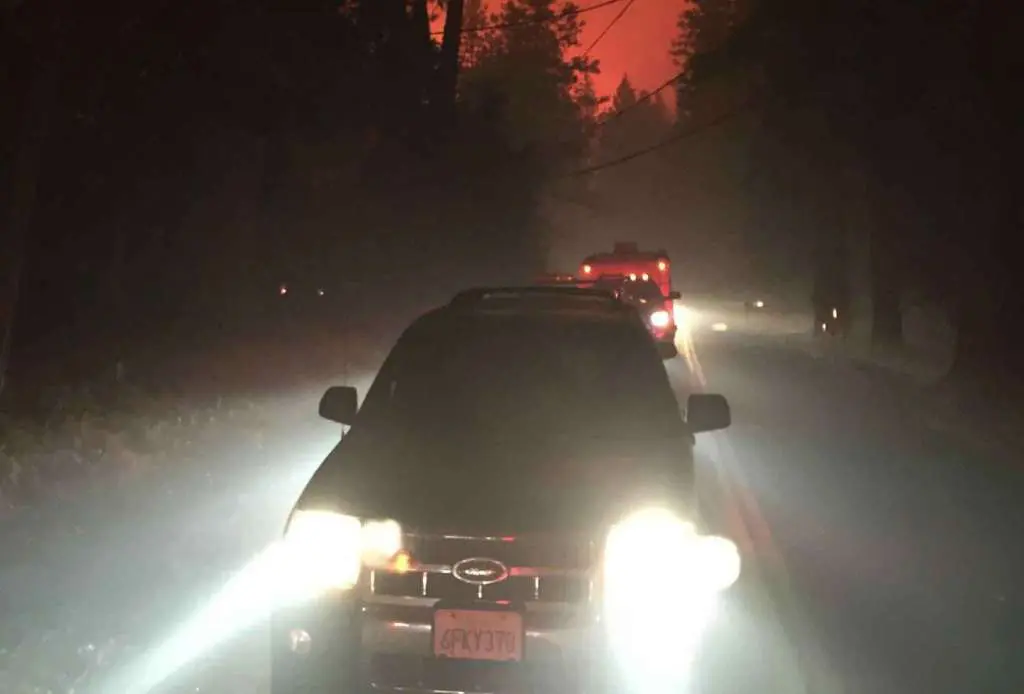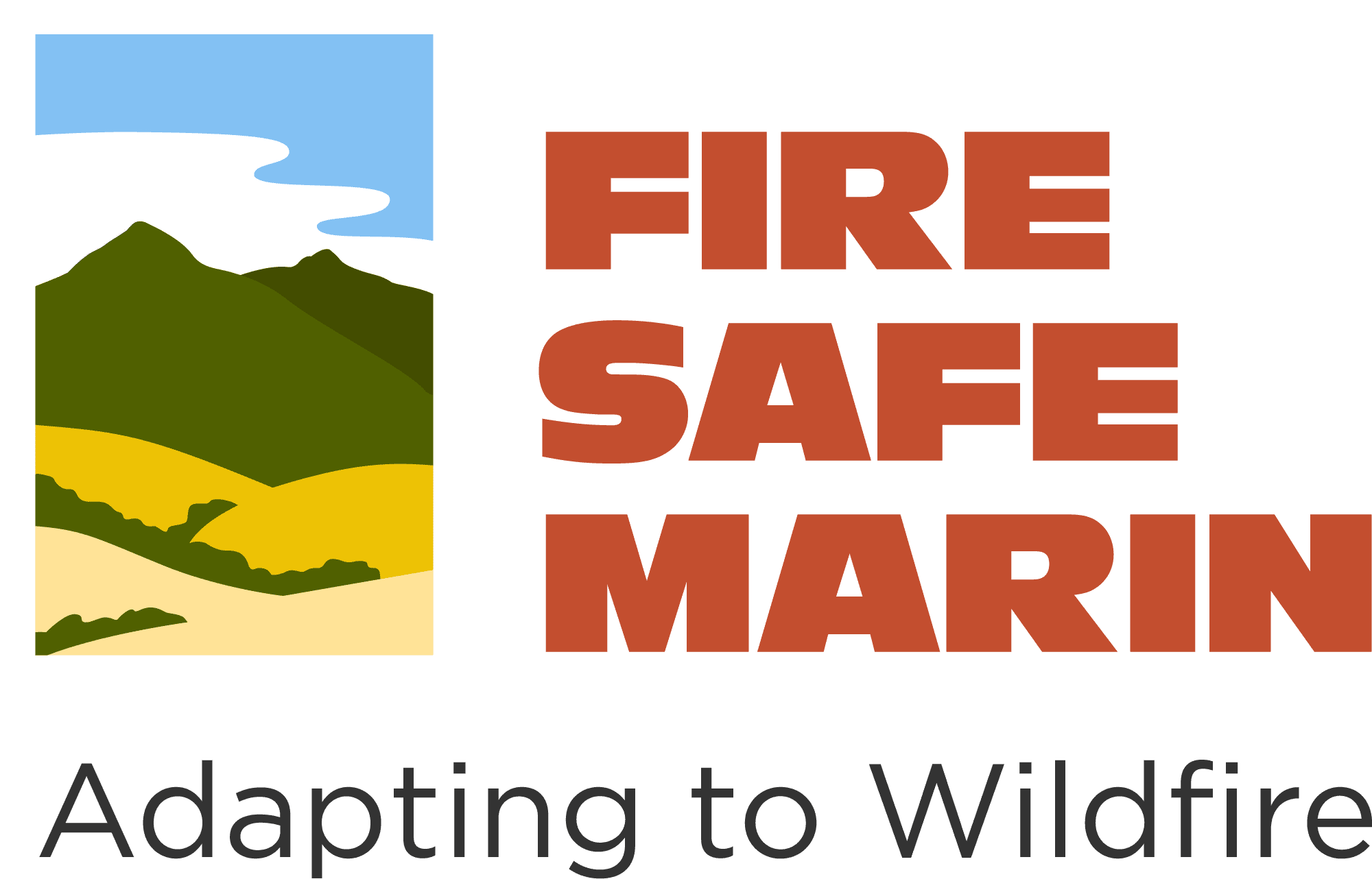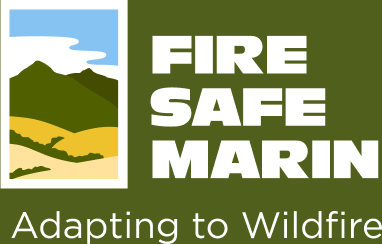
When to Evacuate
Leave immediately if you receive a notification or alert to avoid being caught in fire, smoke or road congestion. Don’t wait to be ordered by authorities to leave if you are unsure, feel threatened, or lose power or communications. Law enforcement will direct the evacuation, and they will work to keep intersections open and moving, but their resources may be limited. Evacuating early (before evacuation is ordered) helps keep roads clear of congestion, and lets fire apparatus move more freely to do their job. If you are advised to leave, don’t hesitate!
- In Marin, the fire Incident Commander (IC) will issue the evacuation order through the local law enforcement agency, and will determine the areas to be evacuated and escape routes to use (if there are options) depending upon the fire’s location, behavior, winds, terrain, etc.
- Law enforcement agencies are responsible for enforcing an evacuation order. Follow their directions promptly.
- You will be advised of potential evacuations as early as possible by Alert Marin. YOU MUST REGISTER TO RECEIVE ALERTS.
- You must take the initiative to stay informed and aware. Listen to your AM/FM radio and TV for announcements from law enforcement and emergency personnel. Monitor social media and pay attention to your surroundings for changes in weather, smoke, embers, or other signs of danger.
- Monitor FM 106.9, AM 740 (KCBS); AM 810 (KGO); FM 88.5 (KQED); FM 92.3, FM 90.5, FM 89.9 (KWMR, in West Marin). Follow @MarinSheriff, @MarinCountyFire, and your local agency social channels (Twitter first, Facebook, NextDoor second).
- You may be directed to temporary assembly areas to await transfer to a safe location.
All evacuation instructions provided by officials should be followed immediately for your safety.
Your Evacuation Route
Your primary evacuation route is usually the one you would take to the grocery store! Take the fastest and most familiar route to a wide, primary road on the valley floor, away from the fire if possible. Never evacuate uphill unless directed to do so by fire or law enforcement authorities. Don’t evacuate by fire road or “cross country” trails where you might be exposed to unburned vegetation.
- Take the shortest route to a place of refuge in an open area, preferably paved, near a valley floor.
- Carry an Evacuation Route Map with at least two routes (if possible) in your Go Kit.*
- Drive your planned route of escape before an actual emergency. This is most likely the route you normally take to leave your community, as that’s typically the shortest and is the route you’re most familiar with.
- The darkness and flames of a fire can be disorienting. Familiar landmarks may not be recognizeable during a fire.
- Don’t panic in traffic! Your goal should be to get to a wide, paved area near a valley floor where you’re safer, even in traffic.
*During an evacuation, law enforcement or emergency personnel may direct you to an alternate route. Always follow their directions.
Take the fastest & most protected route to a valley floor.
Carpool! Every seat should be filled!
Stay in your car or a refuge area if trapped.
Don’t panic in traffic – a wide road on the valley floor is one of the safest places you can be, even in traffic.
Take Your Car!
Media images of burned cars have left many California residents with the misconception that cars are highly vulnerable to wildfires. The opposite is true! Your car provides protection from heat, flames, smoke, and embers. You are MUCH MORE VULNERABLE when you are outside, exposed.
Take the car that is most capable of getting you out alive:
- Leave the convertible.
- Take the SUV or 4×4 high clearance vehicle if you have one..
- Take the car with the fullest tank of fuel.
- Never have an empty seat! Pick up neighbors, especially the elderly and those who may need help.
Your car provides a tremendous amount of protection. Made of glass and steel, it protects from hot gasses, embers, and radiant heat and as long as it stays on pavement, is extremely resistant to igniting if you remain on pavement!
With an AM/FM radio, air filtration and air conditioning, headlights, and protection from heat, your car is like a survival suit for wildfires.
- Turn your headlights on.
- Wear your seatbelt.
- Pick up neighbors – especially elderly or disabled residents who may be unable to evacuate on their own.
- Fill every seat! Carpool!
- Turn on inside air and air conditioning.
- Tune to local news radio stations.
- Proceed slowly and calmly.
- Don’t pass cars when visibility is low.
- Don’t panic in traffic.







